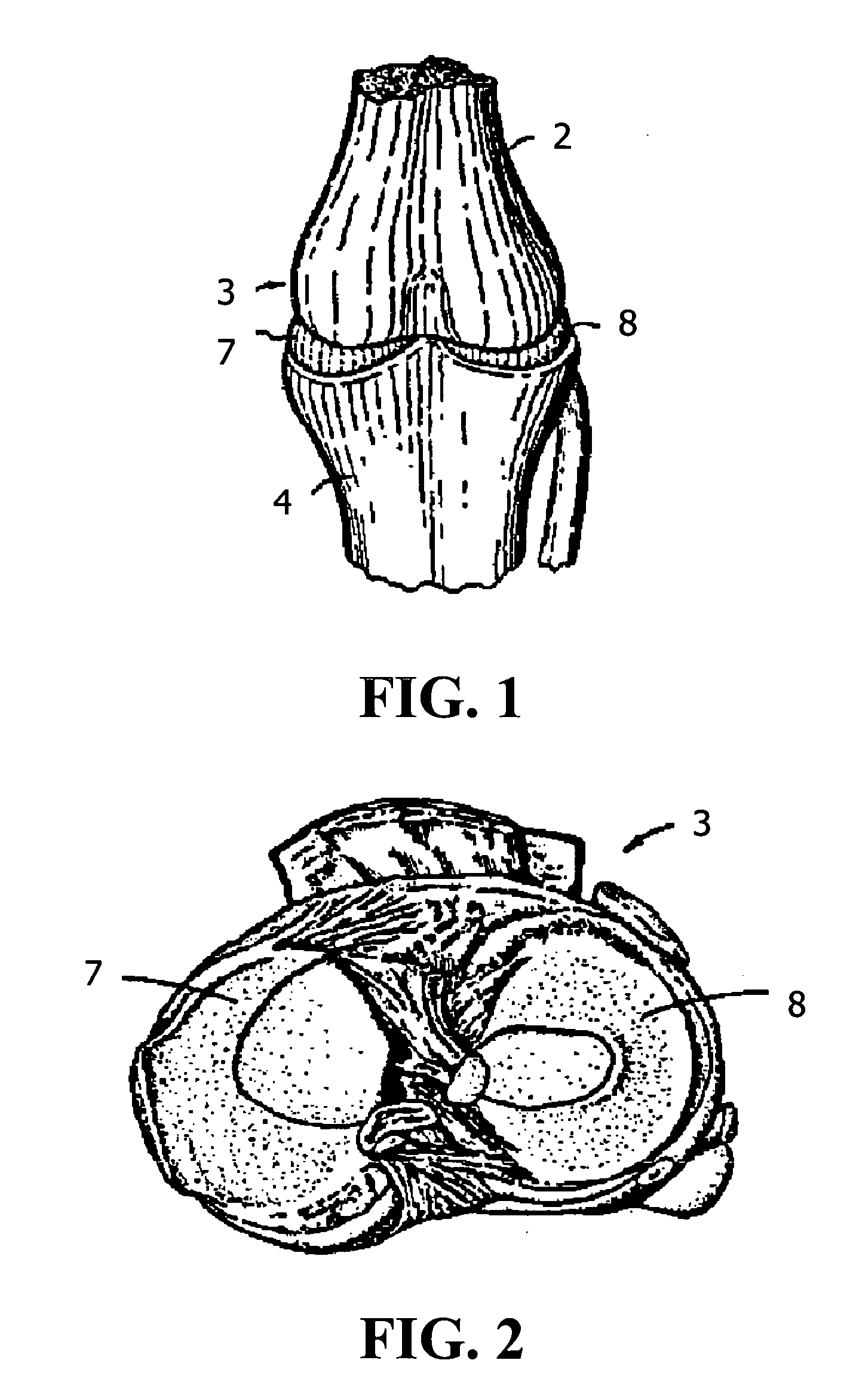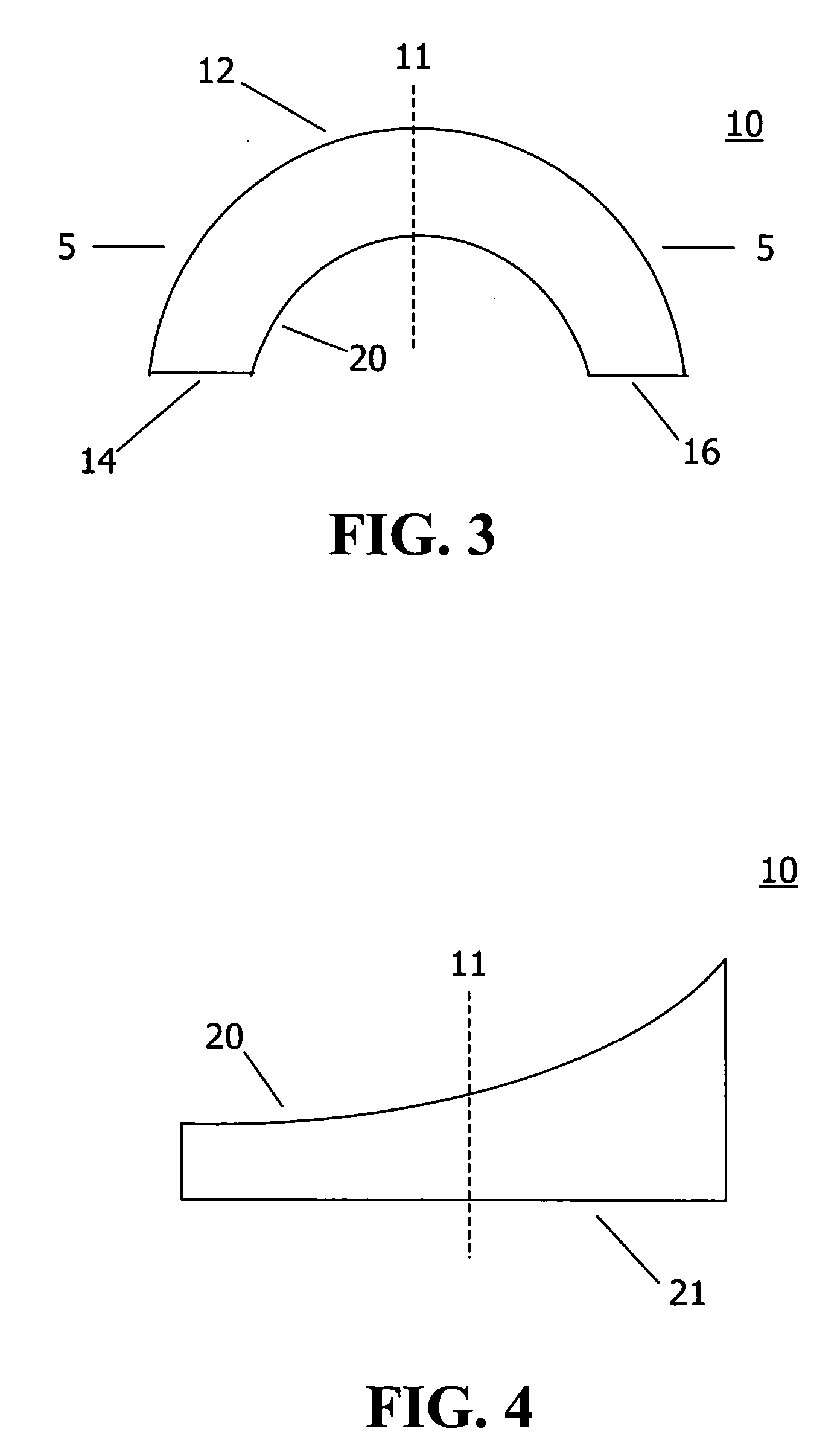Resorbable implant with lubricious coating
- Summary
- Abstract
- Description
- Claims
- Application Information
AI Technical Summary
Benefits of technology
Problems solved by technology
Method used
Image
Examples
example 1
Fabrication of Collagen Matrix
[0056] (A) The collagen content of highly purified type I collagen fibrils (e.g., prepared as described in Example 2 of U.S. Pat. No. 5,681,353) is determined either by gravimetric methods or by determining the hydroxyproline content assuming 13.5% by weight of hydroxyproline in Type I collagen. The amount of purified material needed to fabricate a given density of an implant is then determined and weighed.
[0057] (B) A solution of fibrillar collagen is fit into a mold of specified dimensions, and the collagen fibers are laid down in random manner or in an oriented manner. In the oriented manner, circumferential orientation of the fibers is produced by rotation of the piston about its principal axis as the material is compressed in the mold; radial orientation is produced by manual painting of the collagen fibers in a linear, radially directed fashion.
[0058] (C) The fibers are frozen at −20° C., turned out of the mold, and thawed at room temperature....
example 2
Coating of the Matrices
[0064] A solution of sodium hyaluronate is brushed onto a matrix of Example 1, and exposed to formaldehyde vapor generated from a 2% HCHO solution at 22° C. for 5-10 hours to cross-link the coating to the matrix. The crosslinked and coated matrix is then rinsed repeatedly in distilled water.
example 3
[0065] (A) Approximately 700 g of a Type I or Type II collagen dispersion (e.g., prepared as described in Example 6 or 8 of U.S. Pat. No. 5,681,353) is weighed into a 2 liter vacuum flask. Approximately 120 ml 0.6% ammonium hydroxide is added to the dispersion to coacervate the collagen. About 80 ml 20% NaCl is then added to the coacervated fibers to further reduce the solution imbibition between the fibers.
[0066] (B) The fully coacervated fibers are dehydrated to about 70 g to 80 g in a perforated mesh basket to remove the excess solution from the fibers. The partially dehydrated collagen fibers are inserted into a mold of specified dimension related to the dimensions of the defect to be remedied. Further dehydration is ongoing in the mold using a constant (between 300 grams to 700 grams) weight to slowly remove the water from the fibers, yet maintaining the same density throughout. This slow dehydration process lasts for about 24 hours until the desired dimension (about 8 mm in t...
PUM
| Property | Measurement | Unit |
|---|---|---|
| Fraction | aaaaa | aaaaa |
| Fraction | aaaaa | aaaaa |
| Weight | aaaaa | aaaaa |
Abstract
Description
Claims
Application Information
 Login to View More
Login to View More - Generate Ideas
- Intellectual Property
- Life Sciences
- Materials
- Tech Scout
- Unparalleled Data Quality
- Higher Quality Content
- 60% Fewer Hallucinations
Browse by: Latest US Patents, China's latest patents, Technical Efficacy Thesaurus, Application Domain, Technology Topic, Popular Technical Reports.
© 2025 PatSnap. All rights reserved.Legal|Privacy policy|Modern Slavery Act Transparency Statement|Sitemap|About US| Contact US: help@patsnap.com



